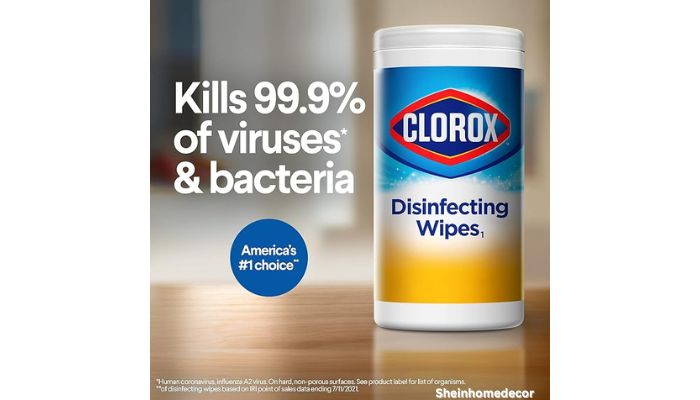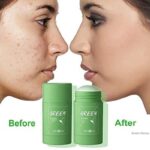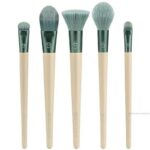Table of Contents
Can You Use Clorox Wipes on Leather
Can You Use Clorox Wipes on Leather is a beautiful, natural material that can add style and elegance to any home or wardrobe. However, like any material, leather requires proper care and cleaning to maintain its look and durability. This leads many leather owners to ask: can I use Clorox wipes on my leather?
The short answer is yes, can you use Clorox wipes on Leather surfaces, but with some important caveats. Clorox wipes contain bleach and other harsh chemicals that can damage and discolor more delicate leathers over time. Always test on a small, inconspicuous area first. For best results, use Clorox wipes sparingly and combine with additional leather conditioning.
In this comprehensive guide, we’ll explore when and how to safely can you use Clorox wipes on leather, proper cleaning methods for different leather types, and alternative cleaning solutions for maintaining your leather’s integrity.
The Composition of Clorox Disinfecting Wipes
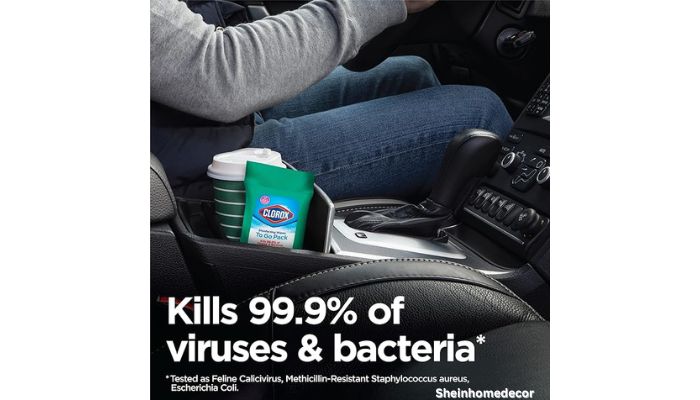
Before using Clorox Wipes on Leather, it’s important to understand what exactly is in them. The active ingredients in a Clorox disinfecting wipe typically include:
- Alkyl (C14 60%, C16 30%, C12 5%, C18 5%) dimethyl benzyl ammonium saccharinate (0.1%) – An antimicrobial agent
- Ethanol (5-10%) – A disinfectant and cleaning agent
- Isopropanol (5-10%) – A disinfectant and cleaning agent
- Sodium lauryl sulfate (<5%) – A cleaning agent and surfactant
The wipes also contain water, fragrance, citric acid, and other stabilizers and preservatives.
The main agents of concern when Can You Use Clorox Wipes on Leather are the alcohols ethanol and isopropanol, and sodium lauryl sulfate. The alcohols act as disinfectants but can also strip away oils and finishes from leather. Sodium lauryl sulfate is an effective degreaser but can also dry out leather over time.
While these ingredients are fine for cleaning hard, non-porous surfaces like countertops, they need to be used with care on permeable materials like leather.
Factors that Determine Clorox Wipe Safety
Whether can you use Clorox wipes on leather item depends on several factors:
- Leather type: Some leathers are more delicate and prone to damage from chemicals than others.
- Leather finish: Finished leathers tend to be more protected than unfinished.
- Item use: Leather subjected to heavier wear-and-tear is more durable.
- Frequency of use: Occasional versus frequent wipe use matters.
- Exposure time: Longer exposure increases risk of damage.
- Wipe formulation: Some Clorox wipes are harsher than others.
Essentially, smooth finished leathers that aren’t heavily worn can likely withstand gentle wipe use on occasion, while suede and other delicate leathers are at higher risk of discoloration and drying with any chemical exposure. Heavily handled leather may hold up to more frequent wipe use, but deterioration can still occur over time.
Always assess the specific leather item before Clorox wipes. Do a spot test on a hidden corner if uncertain.
Can You Use Clorox Wipes on Leather Couches, Sofas, and Chairs
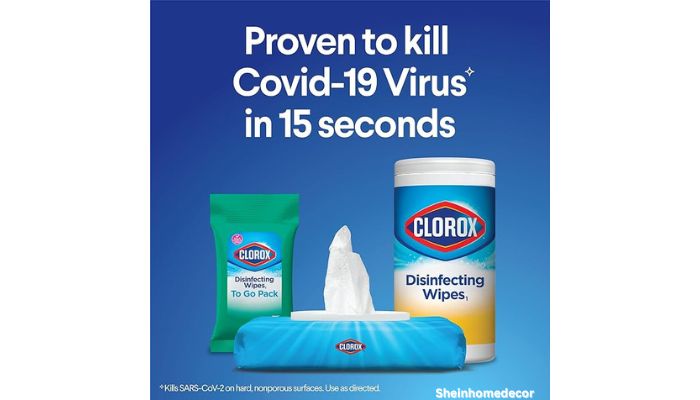
Can You Use Clorox Wipes on Leather upholstery on couches, sofas, and chairs typically has a durable protective finish and vinyl coating that helps resist staining and cracking. This allows most leather seating to tolerate occasional Clorox wipe use, especially on high-touch areas like armrests and headrests.
However, wipes should not be used extensively or as the sole cleaning method. The SDS for Clorox wipes states they should be “kept from unintended contact with…household items like furniture” and are not intended for “continuous cleaning.”
For routine care, use a damp microfiber cloth with a small amount of leather cleaner to gently wipe the seating. Condition regularly with a leather conditioner to replenish oils.
If disinfecting, lightly wipe a small section at a time with Clorox wipes, allowing the leather to fully dry afterward before sitting. Frequently wipe down high hand traffic areas. Avoid oversaturating the leather which can lead to damage.
Leather Car and Truck Interiors
The leather used in most car and truck interiors is factory-finished and treated to resist stains, UV damage, and abrasion. It’s designed to handle regular use.
However, chemicals like sunscreen, dirt, and improper cleaning can still degrade the leather over time. Can You Use Clorox Wipes infrequently on very dirty areas like the steering wheel, door handles, and around the seats can disinfect without bleaching or drying out the leather.
Be aware that Isopropyl alcohol may remove factory coatings, so test a wipe in an inconspicuous spot first. Follow with a leather conditioner. For routine cleaning, use automotive leather cleaners and wipes specifically designed for car interiors.
Leather Purses, Bags, and Luggage
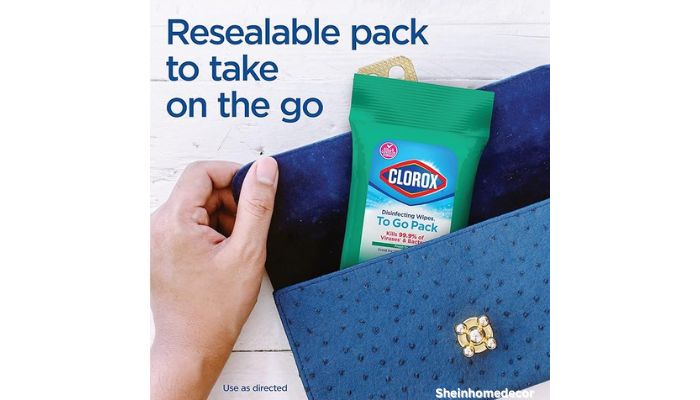
Since purses, handbags, briefcases, and luggage handles get constant handling, the leather is usually pre-treated to withstand oils, spills, and abrasion. Can You Use Clorox Wipes sparingly on these items to disinfect handles and other high-touch areas is generally not harmful.
However, some designer leather bags have very delicate finishes and leathers like lambskin that are more prone to wipe damage. As always, check for colorfastness first in an unnoticeable spot.
To regularly clean most leather bags, use a soft cloth with a mild leather cleaner or soap and water. For scuffs and stains, try specialty leather repair products.
Leather Shoes and Boots
The leather used for most shoe and boot exteriors tends to be heavily finished and able to resist the elements as well as regular cleaning. However, shoes receive a ton of abuse and chemical exposure that slowly degrades the leather. Regular Clorox wipe use can accelerate this damage.
If shoes are just lightly dusty or dirty, use a soft brush or damp cloth to gently clean. For disinfecting or spot cleaning salt stains, sparingly wipe visible areas with Clorox wipes, allowing time to dry after. Use leather cleaner and conditioner regularly to replenish the leather.
For delicate leather shoes like ballet flats or designer heels, avoid Clorox wipes entirely. The dyes may bleed and leathers dry out.
Can you use Clorox wipes on leathers furniture

Quality leather furniture usually has strong yet flexible upholstery that can adapt to constant use. However, the dyes and finishes still need protection from conditioners and cleaners. To disinfect, Can You Use Clorox Wipes can be very lightly used on high hand-touch areas like armrests and table edges as needed. Quickly dry any excess moisture with a cloth.
For routine maintenance, clean with a soft microfiber cloth and pH-balanced leather cleaner. Leather conditioning creams add moisture back into the hide. Stay away from oil and silicone-based products which can break down leather over time.
Exotic Leathers Like Ostrich and Alligator
Exotic leathers derived from animals like ostriches, alligators, snakes, and crocodiles have unique compositions that require specialized care and cleaners designed for each type. The hides have natural oils, scales, and varying porosity levels that react differently to chemicals.
Due to the permeability and sensitivity of these leathers, it’s best to avoid using Clorox wipes entirely. The bleach and alcohol can seep deep into the hides, causing brittleness, drying, cracking, and loss of color.
Instead, use only specialty exotic leather cleaners with moisturizers that won’t disrupt the hides’ moisture balance. Start by vacuuming dust to avoid scratching the bumpy surface textures. Wipe spills immediately with a soft, dry cloth. Protect with leather conditioners.
Suede, Nubuck, and Aniline Leather
Suede, nubuck, and aniline leathers have little to no protective finish, exposing the delicate fibers beneath. This allows for soft, supple feel but also increases vulnerability to liquids, UV light, and cleaning chemicals.
Clorox wipes should never be used on these untreated leathers, even sparingly. The bleaches and alcohols will immediately soak into the permeable hides, leaving permanent water stains, discoloration, fading, and dried-out patches.
To safely clean delicate leathers, use specialty suede and nubuck brushes and foams. For aniline leather, wipe gently with a microfiber cloth, mild soap and water. Always brush with the nap and protect with conditioning sprays.
Faux Leathers Like Vinyl and Pleather
Faux Can You Use Clorox Wipes on Leather like vinyl and pleather are essentially plastic- or rubber-coated fabrics designed to simulate the appearance of real leather. The durable, non-porous surfaces make them resistant to staining and wear-and-tear from regular use and cleaning.
This allows most faux leathers to tolerate occasional Clorox wipe use without issues. The bleach won’t absorb or discolor the material. Just be sure to only apply wipes as needed, allowing time to dry after to avoid any moisture buildup.
For routine cleaning of faux leather, use warm soapy water and a soft cloth or sponge. Avoid harsh chemical cleaners which can strip away the protective top layer over time.
Best Practices for Safely Can you use Clorox Wipes on Leather
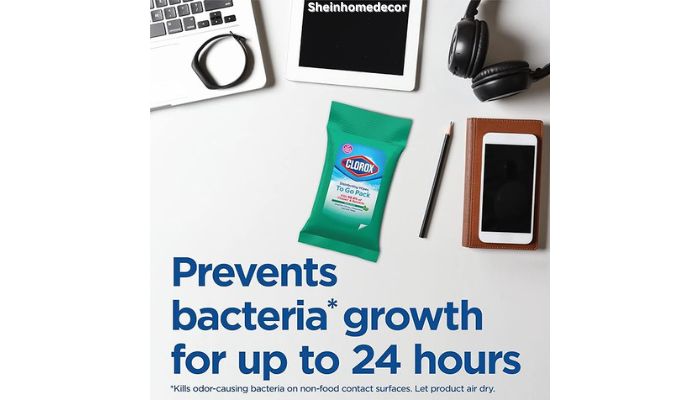
If you wish to can you use Clorox wipes on leathers more durable, follow these best practices to prevent damage:
- Always test first on an inconspicuous spot like an interior seam or underside. Check for any color transfer or darkening.
- Use sparingly and only on heavily soiled areas in need of disinfecting. Spot clean instead of wiping the entire surface.
- Rub gently and avoid oversaturating the leather. Don’t let excess liquid pool.
- Wipe with the leather grain, not against it. Rubbing can cause scratches.
- Immediately dry any damp areas with an absorbent cloth to prevent moisture streaks.
- Limit use to 1-2 times per week maximum to avoid accumulation of chemicals.
- Recondition the leather afterwards to restore moisture and oils.
- Rinse wipes first if using on very delicate leathers to dilute the cleansers.
Avoid using Clorox wipes on:
- Suede, nubuck, lambskin, or other untreated delicate leathers
- Rare antique or vintage leathers
- Furniture with flaking or cracked finishes
- Items prone to color transfer when dampened
- Leather subjected to sunlight, which intensifies fading
With careful, limited use, most everyday leathers like handbags, shoes, car interiors, and furniture can handle occasional Clorox wipe cleaning. But traditional leather soaps and conditioners are still the safest maintenance choice.
Alternative Leather Cleaning Solutions
To routinely clean fine leathers without risk of damage from harsh chemicals, use these Clorox wipe alternatives:
- Distilled water – For clean damp dusting. Avoid mineral deposits from tap water.
- pH-neutral leather cleaners – Contain gentle soaps and detergents without alkalis, solvents, or bleach.
- Saddle soap – Traditional oil-based cleanser CONDITIONERS softens leather. Use sparingly.
- Leather conditioners and oils – Replenish moisturize to prevent drying and cracking.
- Vinegar and water solution – Mild acidity cleans without bleaching. Mix at 1:1 ratio. Avoid on vintage leather.
- Coconut oil – Polishes, conditions, and naturally cleans leather. Avoid overuse.
- Olive oil and lemon juice – Natural acidity cuts grease. Mix 2:1 ratio of oil to juice.
- Castile soap and water – Plant-based cleanser won’t strip oils like detergents.
- Microfiber cloth – Gently lifts dust and dirt without abrasion.
- Specialty leather cleaners – For exotic hides and faux leather.
With a little care and patience, quality leather items can provide years of enjoyment. Avoid harsh chemicals like Clorox wipes and instead use gentler, pH-balanced cleaners designed to preserve leather’s natural beauty. Follow up with regular conditioning to prevent drying and cracking over time. With the proper maintenance, your leather will develop character and rich patina as it ages.
